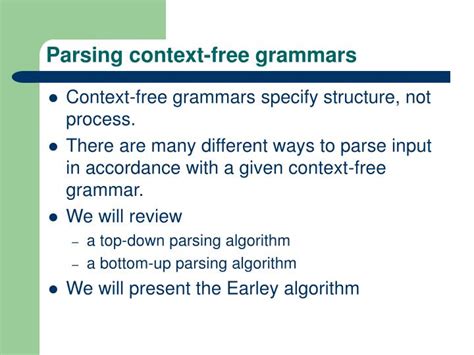In the realm of software development, parsing is a critical task that often requires the resolution of complex grammars. Context-Free Grammars (CFGs) are frequently advocated for their natural alignment with human cognitive processes, allowing for a more intuitive development experience. A recent debate has arisen around the effectiveness of CFGs compared to parser combinators and Parsing Expression Grammars (PEG), highlighting the merits and potential pitfalls of each approach. The proponents of CFGs argue that these grammars mirror human thinking more closely, making them easier to understand and implement. However, opponents cite practical challenges and ambiguities as significant drawbacks.
One of the principal advantages of CFGs is their ease of comprehension and alignment with our cognitive frameworks. Many developers find that CFGs naturally fit into their mental model of grammar structures, which simplifies the task of grammar specification. A typical CFG is composed of a set of production rules that define how terminal and non-terminal symbols can be combined to produce valid strings in a language. This clarity and simplicity are particularly advantageous when dealing with well-defined and deterministic languages. However, the clarity of CFGs can be misleading if not handled correctly, leading to ambiguities in grammar specification.
Discussions surrounding the challenges with parser combinators and PEG often highlight the inherent complexities in ensuring correct implementation. Parser combinators, popular in functional programming languages like Haskell, allow for the composition of more complex parsers from simpler ones. While this modular approach is elegant in theory, it can result in ‘footguns’—hidden pitfalls that cause subtle bugs. Haskell’s Parsec library, for example, is praised for its expressive power but criticized for its potential pitfalls, even for seasoned Haskell developers. Unlike typical Haskell programs where ‘if it compiles, it runs correctly,’ parsers written with combinators may require extensive testing to ensure correctness.
Consider the following CFG example to illustrate the challenge of ambiguity. This CFG is designed to parse strings of ‘a’ followed by ‘a’ or ‘a’ ‘b’:
S ::= A S | A A ::= 'a' | 'a' 'b'
While this grammar may seem straightforward, direct translation to PEG may lead to unexpected behavior. PEG prioritizes the first matching rule, often resulting in incorrect parsing when order of alternatives matters. The subtlety in PEG’s ordered choice mechanism means that a CFG specifying the same language may need careful tweaking in PEG, and errors may not be immediately apparent.
Critics of PEG argue that its linear-time parsing guarantees come at the cost of intuitive understanding. A common failure mode with PEG is the handling of longest-match and backtracking semantics, which can lead to unexpected results. For example, a PEG rule Str = 'a' Str 'a' / 'a' will not parse the string ‘aaaaa’ as expected, because PEG does not reconsider previous alternatives once a match is found. This deterministic nature of PEG is beneficial for parsing speed but can obscure the understanding of grammar behavior, especially for those used to the more forgiving nature of CFGs.
In contrast, developers who prefer CFGs argue that the inherent ability to define ambiguous grammars, while a potential flaw, actually aligns better with the design goals of many languages. The ability to define parsing rules without immediately resolving conflicts allows for more flexible and expressive grammar specifications. Indeed, the error feedback from CFG parsing tools can help in identifying and resolving ambiguities sooner in the development cycle. Moreover, parser generators that target CFGs, such as those producing LR(1) or LALR parsers, provide strong guarantees about grammar unambiguities, ensuring that only a single parse tree is possible for any given input, thus avoiding runtime surprises.
Ultimately, the choice between CFGs, parser combinators, and PEG depends on the specific requirements of the project and the developer’s familiarity with these tools. While CFGs offer a more intuitive and cognitively aligned approach for many, parser combinators and PEG provide powerful, albeit tricky, alternatives that can precisely match specific language requirements. The debate underscores the importance of understanding the formal properties of parsing tools and the necessity for comprehensive testing and validation, regardless of the chosen method. Each method has its merits and pitfalls, and the key to successful parsing lies in choosing the right tool for the job and leveraging the strengths of each approach appropriately.
To summarize, while context-free grammars can offer a more natural way for developers to craft and understand parsers, the complexity and ambiguity inherent in their use shouldn’t be underestimated. In applications where deterministic parsing and clear disambiguation rules are essential, PEGs and parser combinators can offer valuable benefits despite their initial learning curve. As the software development community continues to evolve and share their experiences, the insights garnered from real-world applications will further illuminate the best practices in parsing strategy.


Leave a Reply